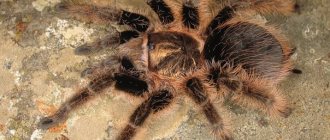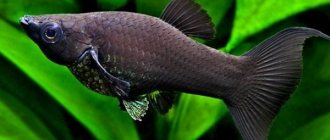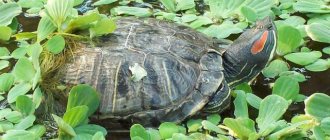There are currently 883 species of spider described in the scientific literature. A large number of species are found in Mexico and Brazil and about 20 species in Panama that were previously found in Mexico, which indicates their migration.
Many Brachypelma species are found along the Pacific slopes of the Sierra Madres (Western and Southern Mexico), and the western side of the Transverse Volcanic Belt and mountain ranges of Mexico. Brachypelma Vagans and Brachypelma epicureanum are found in the Atlantic states of the United States.
The spider has a calm character and flexible nature, quite colorful coloring and is not aggressive. Easy to maintain and forgiving of many mistakes, suitable as a first pet.
In Mexico, spiders live in areas with the following climate:
- rainy season, which lasts from June to July:
- October to November is the dry winter season, which lasts until July.
Average life expectancy of spiders of this species:
- females from 20 to 30 years old;
- males up to 10 years old.
In Russia, three species are popular as pets; we will consider them below.
Brachypelma Emilia
The northernmost species is found west of the western Sierra Madres range in the State of Sinaloa, Durango and Coahuila.
Habitats range from dry coastal areas to palm transitional forests and tropical rainforests. Found at various altitudes. Nevertheless, it builds its burrows under leaves and soil, thereby providing itself with the necessary humidity and protection from sunlight. The size of the hole is from 20 to 100 cm.
Brachypelma smithi
Brachypelma smithi
It has a bright orange-red coloration on the kneecaps of its feet and is found on the upper edges of tropical deciduous forests and cool, dry uplands. Less demanding on high temperature and humidity.
All Brachypelma love to dig holes and hide from the light. In home spiders, they dig holes only if something bothers them and if they have nowhere to hide. Young spiders often dig holes.
On this topic, you may be interested in: Types of scorpions, what they are, which are the most dangerous
In nature, a spider is sometimes found in cohabitation with frogs or snakes in the same hole, and lives peacefully with them.
Small spider Brachypelma smithi 3-4 molt
Reproduction
The breeding season of almost all brachypelma species occurs during the monsoon season.
The male and female spiders are similar in color and pattern, but have some differences in morphology, color intensity, body size and lifespan.
The spider's clutch matures in the dry winter months and usually breaks open in late spring, from where small spider nymphs emerge.
Some breeding studies of Brachypelma species have shown that adult females do not mate or lay eggs every year, although they have not yet been able to prove this.
Brachypelma Smitty spider in a glass spider cage
Prices
Prices for popular varieties vary on average from 500 to 15,000 rubles. The cost of the female is much higher, since she lives longer than the male. The price also changes according to the aggressiveness scale:
- non-aggressive pet (recommended for beginner arachnophiles);
- moderately aggressive (can bite, but this is rare; suitable for breeding by arachnid lovers with experience);
- aggressive pet (recommended for keeping only experienced arachnophiles);
- very aggressive tarantula spiders (not generally suitable for home keeping).
In addition to the factors described above, the cost is affected by the categories of pets:
- harmless animals that do not cause difficulties;
- you may encounter minor difficulties in care;
- high difficulties.
When purchasing, it is important to pay attention to indicators such as the number of molts and body size. It should be noted that young individuals molt every month. Molting is usually denoted by the letter “L”.
Contents of brachypelm
As can be seen from the habitat of these spiders, they are quite unpretentious in terms of humidity and temperature.
Small spiders can be kept in small plastic containers that they cannot chew and escape, such as plastic food containers. There is no point in planting them in a large spider bed, as they will simply bury themselves and it will be difficult to feed them.
In both small and large spider plants, it is necessary:
- Use coconut substrate as soil;
- Make a shelter for the spider;
- Maintain the necessary soil moisture, there should be no swamp, the soil should simply always be moist;
- Remove uneaten food residues;
- You can put a drinking bowl, but spiders practically don’t use it, it just adds moisture;
- In a large spider bed it is necessary to change the soil approximately once a year, in a small one every six months;
- Be sure to provide ventilation;
For large specimens, special glass spider cages are best suited, although the spider can easily live in a plastic container with ventilation.
It is necessary to take into account that these spiders are burrowers and do not like light; they leave their burrows mainly at night.
If you do not provide shelter and do not maintain the humidity level, they will begin to dig holes and hide in the ground. Under acceptable conditions and the presence of shelters, they do not dig holes.
Be sure to make places where he can climb, for example, like in my spider bed, place pieces of pine bark, only without resin. You can find some branches or roots, the main thing is that the tree is not susceptible to rotting, since the spider plant is always damp.
The bark or tree must be boiled in boiling water and dried well, this will kill insects and other pests and parasites.
On this topic, you may be interested in: Sydney funnel web spider, or Atrax robustus
For me, he almost always sits on it and doesn’t hide anywhere, which makes it very convenient to watch him.
The normal temperature for them is about 24 degrees, they live without problems from 19 degrees, so it doesn’t make much sense to heat the spider, although mine has a favorite place under the LED lamp, where it is always warm, the spider spends there most of the time, mainly in winter.
Brachypelma smitty warms itself under a lamp
Maintain a humidity level of 60 to 70 percent by regularly misting the substrate or placing a large bowl of water.
If you see your spider sitting over a bowl of water, but not drinking, most likely the spider web is too dry; if it sits in the farthest and driest corner, then it is too wet, watch your animal.
Feeding the tarantula
Spiders do not eat very often: an adult spider requires food once a week. The best size food is equal to the spider's abdomen, but it may try to attack larger prey, especially if it is very hungry.
They feed on various insects:
- locusts;
- crickets;
- cockroaches of various types;
- mealworms;
- Zophobas larvae.
For adult tarantulas, even food such as large Madagascar cockroaches, small frogs and even mice are suitable.
Suitable prey must be alive and moving, and then the spider will begin hunting for it. He will happily chase her across the entire surface of the terrarium and experience excitement. This is a natural behavior that is beneficial for him.
It is worth remembering that adult vagans can go without food for a very long time - for several weeks, and with good health they can go hungry for months, up to one year. At the same time, you need to always have unlimited water nearby. Of course, there is no need to specifically go on hunger strikes for them, but you shouldn’t worry that the spider is starving. You can increase the period between feedings to 8-10 days. You shouldn't feed them too often.
The second name of the tarantula spider from the genus Brachypelma is the Mexican red-haired tarantula spider.
With young individuals everything is different. They grow actively and need food much more often than adults. It is advisable to feed them once every two days, and the youngest ones constantly, never limiting their access to food. There should be something edible in the terrarium at all times.
By the way, small tarantulas do not need that much space, and they can even be kept in small containers. This will make it easier for them to find food.
Molting can be called a special period for each spider - its body prepares for it in advance and adapts subsequently. Therefore, some time before the start of the process, you need to stop feeding the insect. You can resume feeding a few days after molting.
How dangerous are brachypelmas for humans?
Among the domestic tarantula spiders, brachypelmas are the most obedient and calm pets, for this reason they are ideal for novice breeders and are not afraid to be left with children, although it is not recommended.
Nevertheless, like any spider, it has means of defense, this is poison and hairs on the body.
When he feels in danger, he sheds prickly and toxic hairs from his body, which fall on the skin or eyes of the attacker, causing him discomfort and irritation. In humans, these hairs can cause an allergic reaction, mild inflammation and itching that can last up to several days. For this reason, if the spiderling is near people, it is recommended to cover the ventilation holes with a fine mesh, such as gauze.
The spider is not aggressive and when threatened, if shedding hairs does not help, it usually tries to run away and hide; it is very difficult to force it to bite someone.
Like all spiders, it is poisonous , but it bites only when absolutely necessary, since it needs poison to digest and kill food; often the bite can be dry.
The bite is not fatal if there is no allergic reaction, the poison is similar in effect to bees, consequences: pain, swelling of the bitten part of the body, fever, etc., it is better to consult a doctor.
Names and hybrids
When looking for information about this spider, it is important to know what names it can be found under. In addition to the Latin and Russian name of the spider, you can find the following names:
- Mexican black velvet.
- Mexican red pump.
They can be used to find information about the tarantula on the English-language segment of the Internet. In addition, it is often called not the red-haired one, but simply the red Mexican tarantula.
The tarantula spider lives in the South of North America
In addition, the genus Brachypelma includes other similar spiders, including the most famous representative of the genus, Brachypelma albopilosum. It is he who occupies first place in the popularity chart, ahead of even the tarantula vagansa. Confusion arises not only with this species, but also with others, for example:
- Brachypelma sabulosum.
- Brachypelma angustum.
They are often sold under the guise of the Vagans tarantula. It is not so easy for a novice amateur to distinguish between them.
Some even claim that all spiders available in the CIS are not Brachypelma vagans, but only representatives of these two species and hybrids from B. vagans and B. albopilosum. Unfortunately, such hybrids are not always healthy and may have developmental deviations. Very often they do not even survive to adulthood due to poor health. You can recognize them by comparing the spider with both representatives of the corresponding species and finding common features with both one and the other species.
Health problems
Like most tarantula spiders, brachypelmas rarely get sick.
The most likely health problems can be caused by the following reasons:
- Fall from a height - the spider's exoskeleton is similar in structure to an eggshell, so a fall leads to its splitting and subsequent death of the pet. You can avoid the problem if you use a soft substrate and do not build too high structures in the spider web.
- Dehydration – Brachypelmas require higher humidity than other tarantulas. Make sure that the spider plant always has moist soil and a drinking bowl with water. Spiders do not drink water, but the water bowl maintains the humidity level, and they can sometimes bathe in it. Signs of dehydration in the spider, a slightly shriveled abdomen and very low activity. If he is severely dehydrated, he may curl his paws under him. If you see these symptoms, move the spider to a separate container containing a damp towel, after a while it will come to its senses. Do not put him in a container with water, he may drown, since his lungs are located in the lower part of his body.
- Molting - do not touch the spider while it is molting, even if it is lying upside down. This state is normal during this process. But any attempt to touch it can lead to damage to the new fragile exoskeleton and subsequent death of the pet.
Breeding recommendations
Breeding these arthropods in captivity is not that difficult. Initially, each spider should be kept separately, but for mating they will have to be placed in the same terrarium. Most often, the process occurs without any problems: if the female is well-fed, she calmly allows the male to approach her, who quickly fertilizes her and hides away.
https://youtube.com/watch?v=Ocyo1NFCXQs
Nevertheless, emergency situations often occur in which the female does not like the male. She may behave aggressively towards him and even try to eat him. Therefore, the owner of the spiders needs to carefully monitor the process and, if suspicion arises, quickly place them in different terrariums.
Otherwise, problems with breeding usually do not arise. Vagans is also suitable for beginners as the first spider for breeding.
This is a very fertile species - after mating, the female lays from 600 to 1200 eggs in a cocoon. The incubation period is seventy days. After this period, the first spiders begin to appear. Several hundred individuals hatch from the eggs of one pair. This explains the low price of this type of spider and the ease of its acquisition.
Newborn tarantulas grow quite quickly - their growth rate significantly exceeds that of most other brachypelmas and is equal only to that of B. albopilosum.
Immediately after hatching, the spiders can be fed with the smallest insects, gradually moving on to larger food.











